Nothing is more exasperating than seeing your hard-grown baby cucumbers wasted by insects turning them into their private smorgasbord. You look at them and wonder what kind of insects would eat them. After careful research, we have come up with a list of common insects that eat baby cucumbers.
Many insects eat baby cucumbers. These include insects that eat the cucumber fruit, its leaves, and its roots. They are:
- Cucumber Beatles
- Pickle Worms
- Aphids
- Cabbage Looper
- Cut Worms
- Spider Mites
Now that we have enumerated the kinds of insects that feast on your baby cucumbers, you may want to learn more about each of them, how they affect your cucumbers, and how you can prevent them from starting in the first place. Read on as we give you the details and solutions based on our research.
![photo of baby cucumbers, fresh harvest, green cucumbers, What Is Eating My Baby Cucumbers [And How To Prevent It]?](https://gardentabs.com/wp-content/uploads/2022/08/What-Is-Eating-My-Baby-Cucumbers-And-How-To-Prevent-It-visuals.png)
Cucumber Beetle
The cucumber beetle is a common insect that feeds on the leaves of the cucumber and other cucurbits like squash and melon.
There are three kinds of cucumber beetles. There is the striped cucumber beetle that most gardeners know, and then there is the spotted and banded cucumber beetle. All of them carry the incubated bacteria inside their gut that infects the plant with the wilting disease.
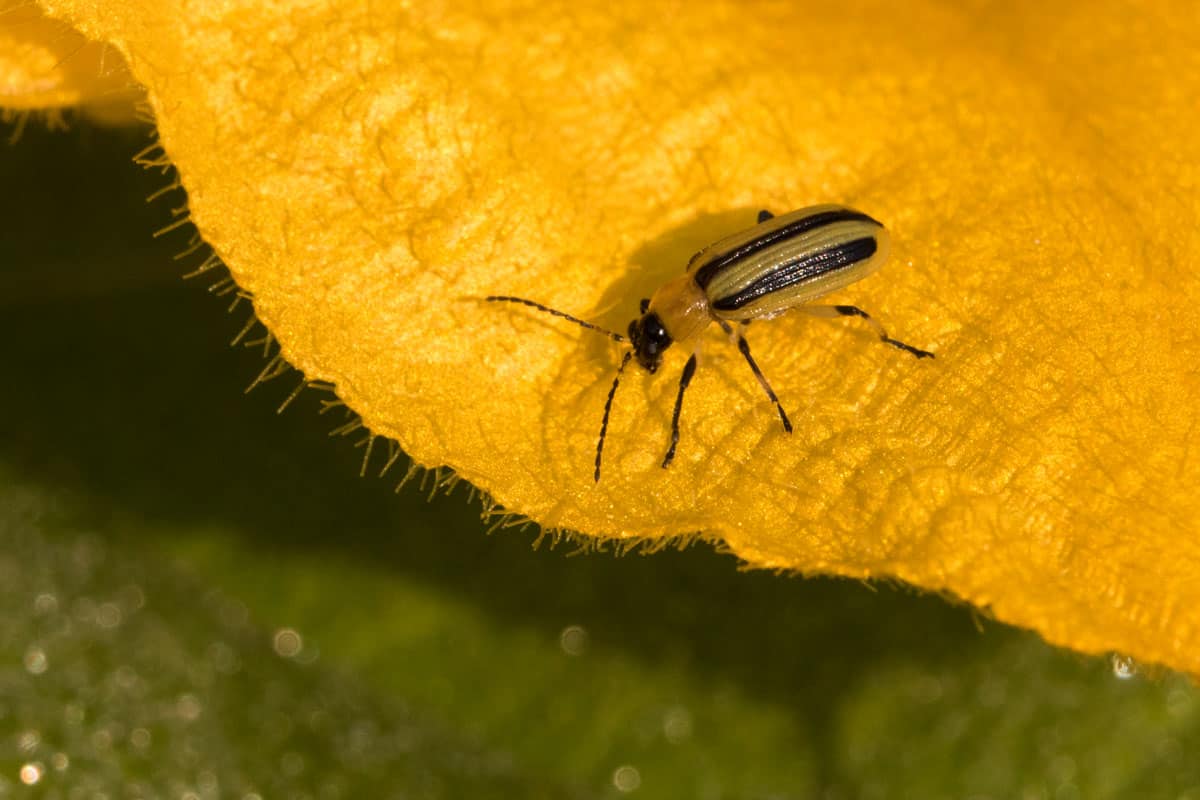
Symptoms
Cucumber beetles will stunt seedlings, damage leaves, stems, and petioles, and reduce plant stand. While all of these are a problem, the worst thing they do to your cucumber is that it brings in wilting bacteria that will eventually kill your plant.
Prevention and Management
Early application of kaolin clay can prevent and manage small populations. However, once the wilting disease starts, the only solution is to destroy the affected plant. A more effective solution is to prevent the insect from reaching the plant in the first place by using floating row covers.
They will need to be removed at bloom to allow bees to pollinate them. You can of course hand pollinate the cucumber flowers instead of taking away the need to expose them to the beetles. If the plants are infested, you may use neem oil as an insecticide.
Pickleworms
Pickleworms are the larvae of the pickleworm moth. They may be hard to identify because they change as they develop. They are colorless when newly hatched and will then grow bristle hairs with raised dots. Upon maturity, they lose their bristle hairs and turn anywhere from light yellow to green.
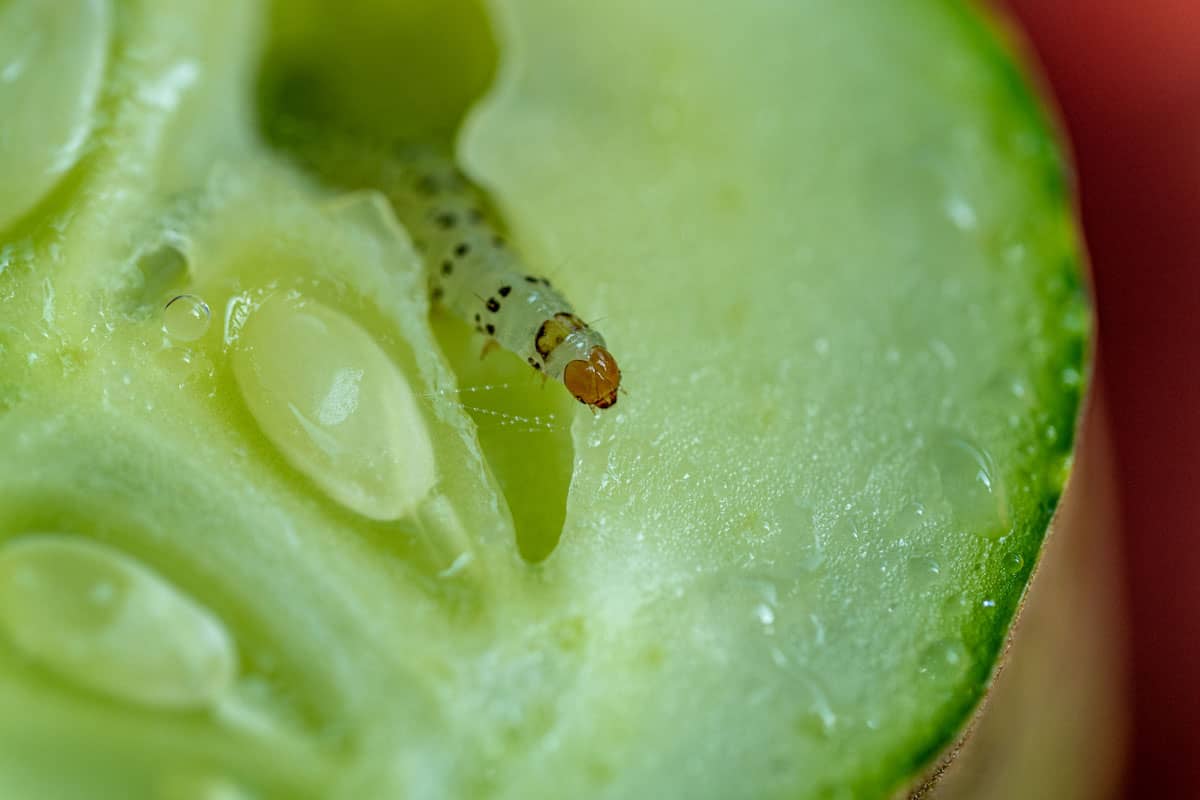
Symptoms
Pickle worms primarily attack squash but will also burrow into other cucurbits such as melons and cucumber. Pickle worms leave holes in the cucumber during their larvae stage of development.
Prevention and Management
You can prevent pickle worm infestation by covering your plants with sheer netting. You can lessen infestation even more by removing infested plants. You can also spray neem oil as an insecticide.
Check out this neem oil on Amazon.
Aphids
Aphids are tiny sap-sucking insects. They reproduce quickly and first infest the underside of the leaves and stems.
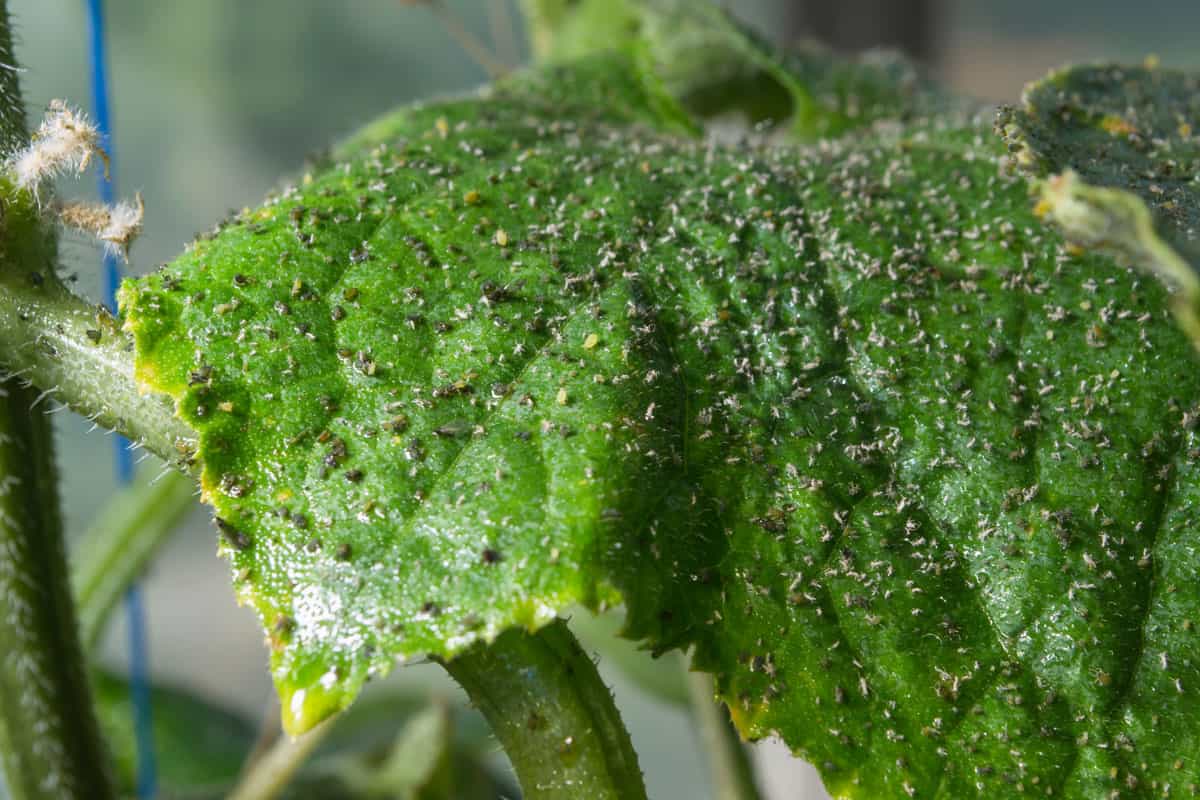
Symptoms
Aphids will cause the leaves to turn yellow. This will cause distortion and may leave necrotic spots and stunt shoots. Besides this, aphids may also carry diseases that may be harmful to the cucumber plant.
Prevention and Management
You can spray a pepper, cooking oil, or soap-based homemade insecticide to prevent and control aphid infestation. There is no need to wait for them to infest your cucumber plant. For smaller infestations, you may crush the aphids with your fingers or prune the leaf where there are aphids.
Cabbage Looper
Cabbage loopers are moths that start as green larvae/caterpillars. They are smooth-skinned with a few long bristles that grow on their backs. They have two pairs of leg-like appendages on their fifth and sixth abdominal segments.
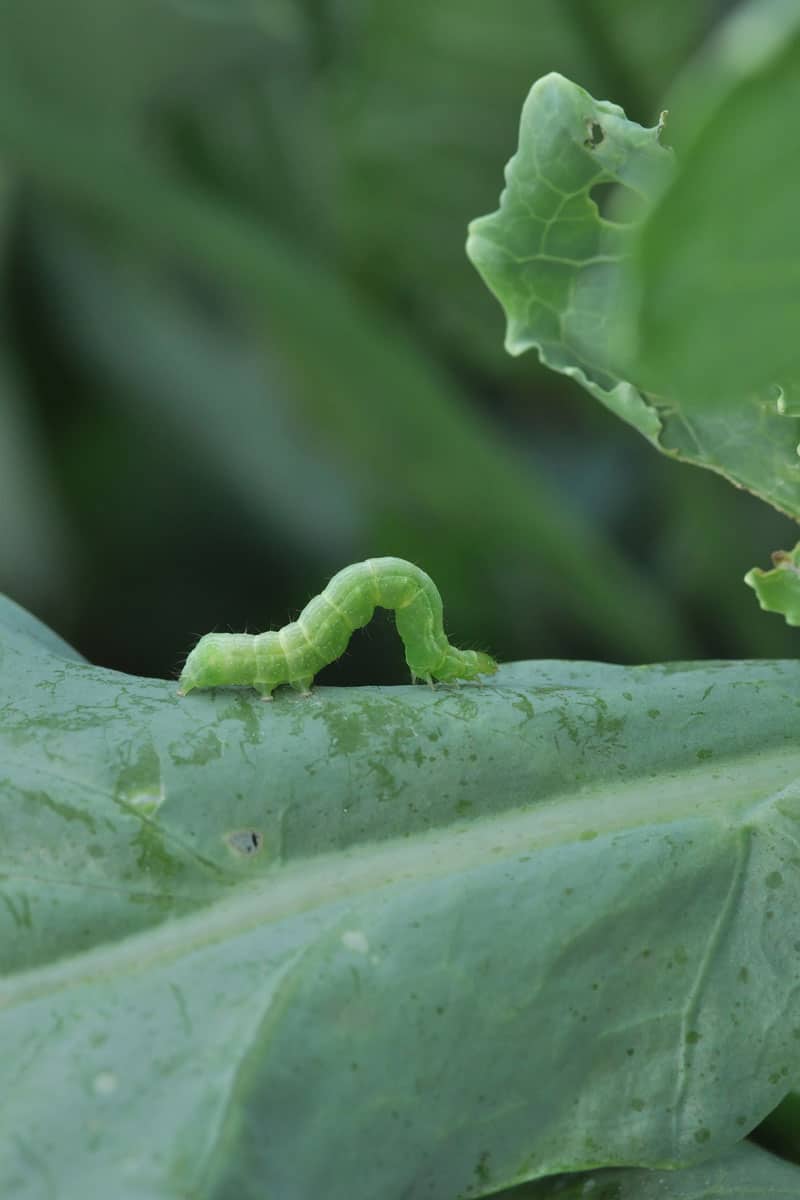
Symptoms
You will see a lot of small holes in the leaves of your cucumber plants. These are holes produced by the caterpillar eating the leaves.
Prevention and Management
These caterpillars are usually kept in check by natural predators. You can introduce ladybugs, spiders, and wasps to feed on them. You can regularly pick them off the plant when gardening.
Some gardening stores also carry predator insects that you may purchase and introduce to your garden. You can also spray neem oil as a preventive measure.
Squash Bug
Squash bugs are large flat insects that use suckers to suck out sap from plants. They are colored dark brown or dark gray, with abdomens having brown and orange stripes. They are often confused with stink bugs because of their appearance and because both exude a bad odor when crushed.
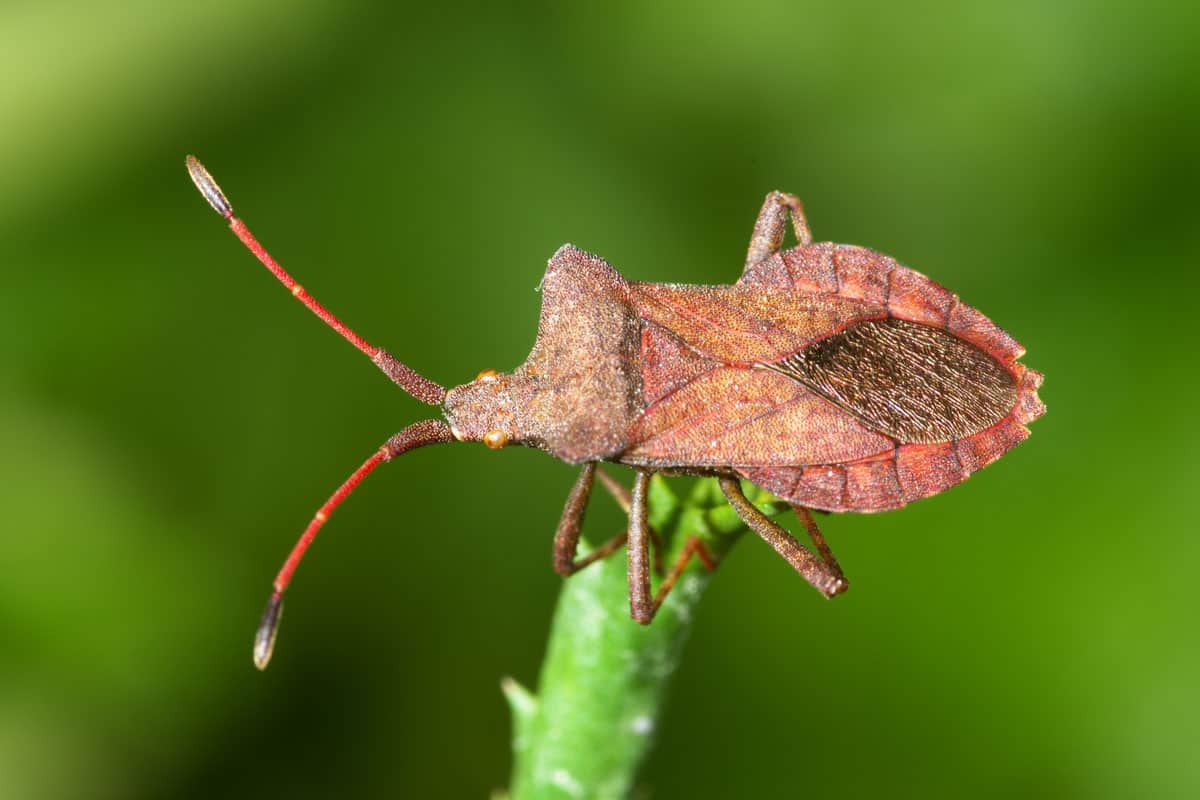
Symptoms
Squash bugs when young suck out the sap from leaves causing them to turn yellow and then brown because of toxins released by the bug. Once they mature, they will start feeding on the cucumber fruit, which will stunt their development and begin to rot.
Prevention and Management
Trellised plants are less susceptible to squash bugs. You can place boards on the ground near the cucumber vine plant.
The bugs will congregate under the boards at night and in the morning they can be collected and dropped into a bucket of soapy water to kill them. You can also inter-crop your cucumber plant with nasturtium, a vining plant that repels squash bugs.
Finally, you can spray your plants with a combination of dish soap and oil to kill the bugs.
Cutworms
Cutworms are the larvae of several kinds of moths. Depending on the species, cutworms come in different colors from green, pink, brown, or black. They will all have muted stripes running down their backs. One way to identify them is that if you disturb them they will curl u into a "C".
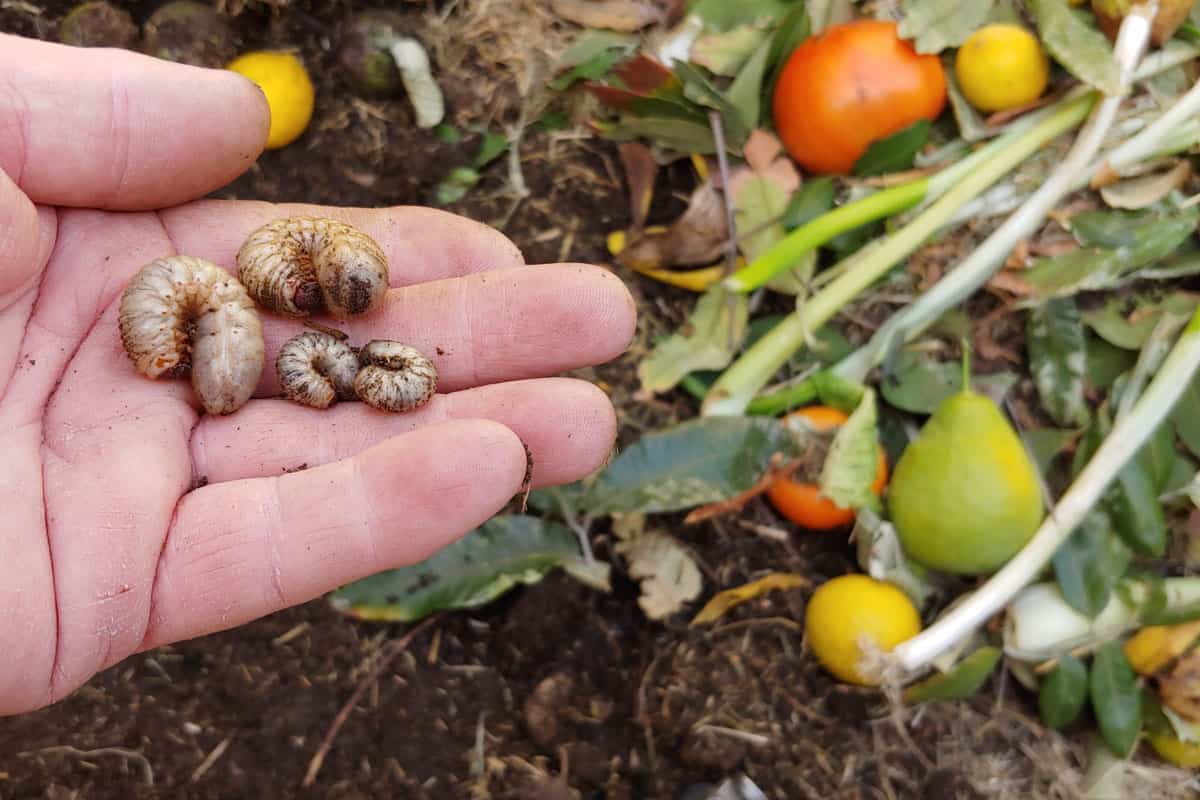
Symptoms
Cutworms will burrow into the ground during the day and come out to feed at night. They will damage or cut the stems and will mostly damage seedlings.
Prevention and Management
Cutworms will overwinter as larvae in the soil, so you can till your garden in the fall to expose and kill them. You can also spread diatomaceous earth around the stem of your cucumber plant.
You can manually pick them several nights in a row. You can also spray neem oil, soap, and water, vinegar solution, chili spray, or a pepper and garlic mixture.
Spider Mites
Spider mites live on the underside of the leaves of plants and are so small that you need a magnifying glass to see them. To detect their presence, it will be better to look for the protective silk webs that they produce.
Do not let their diminutive size fool you, as they breed quickly and have the potential to kill your cucumber plant.
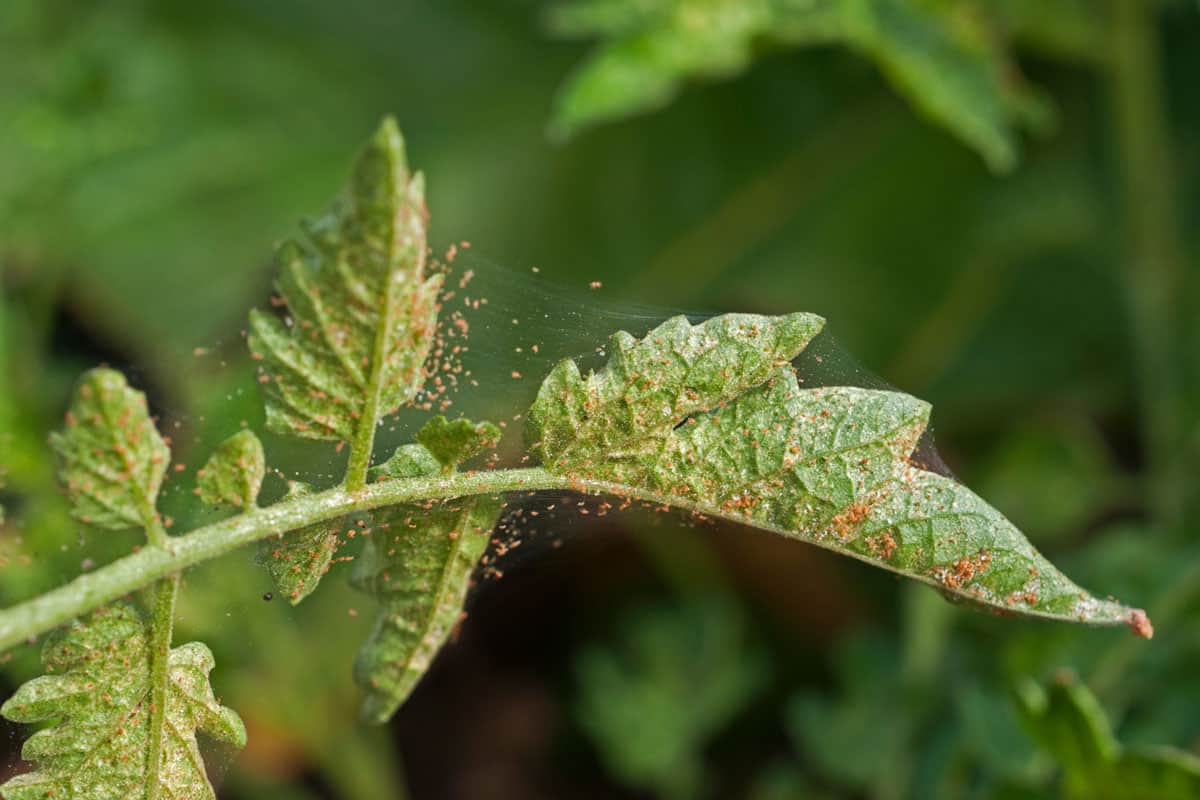
Symptoms
The first symptoms that you will notice will be lots of tiny yellow spots. Then the leaves will turn pale bronze and will be scorched around the edges. Soon the leaves start to fall prematurely. The cucumber fruit will also be affected and produce a sandpaper-like texture.
Prevention and Management
You can plant parsley, garlic, dill, lemongrass, peppermint, or rosemary around your cucumber plant to repel spider mites. You can also use predator insects that you can purchase at your garden supply store.
Spider mites also require dry, dusty conditions, so regularly watering your plant will discourage spider mites from infesting. Another solution is to spray with either an alcohol and water solution or an organic soap with a water solution.
Can You Apply Permaculture Integrated Pest Management To Prevent Cucumber Pests?
In addition to the preventive and control measures individually suggested above, you can choose to apply a permaculture pest management system combining the following:
- Chicken feed - Feed the larvae and caterpillars to your chickens as an excellent free source of protein.
- Plant flowers - Flowers attract predator insects that will devour the pest.
- Polycrop - Mixing different kinds of plants in a bed will lessen pests from smelling the scent of their victim plants. The mixed scent will confuse them.
- Companion Plant - Choose companion plants that will repel insects and pests such as basil, oregano, lemongrass, etc.
- Beekeeping - The preponderance of bees will greatly lessen pest insects as the bees will pray on them.
- Sticky Trap - Purchase or make DIY sticky traps that will attract and trap insect pests.
Check out this sticky trap on Amazon.
Summing Up
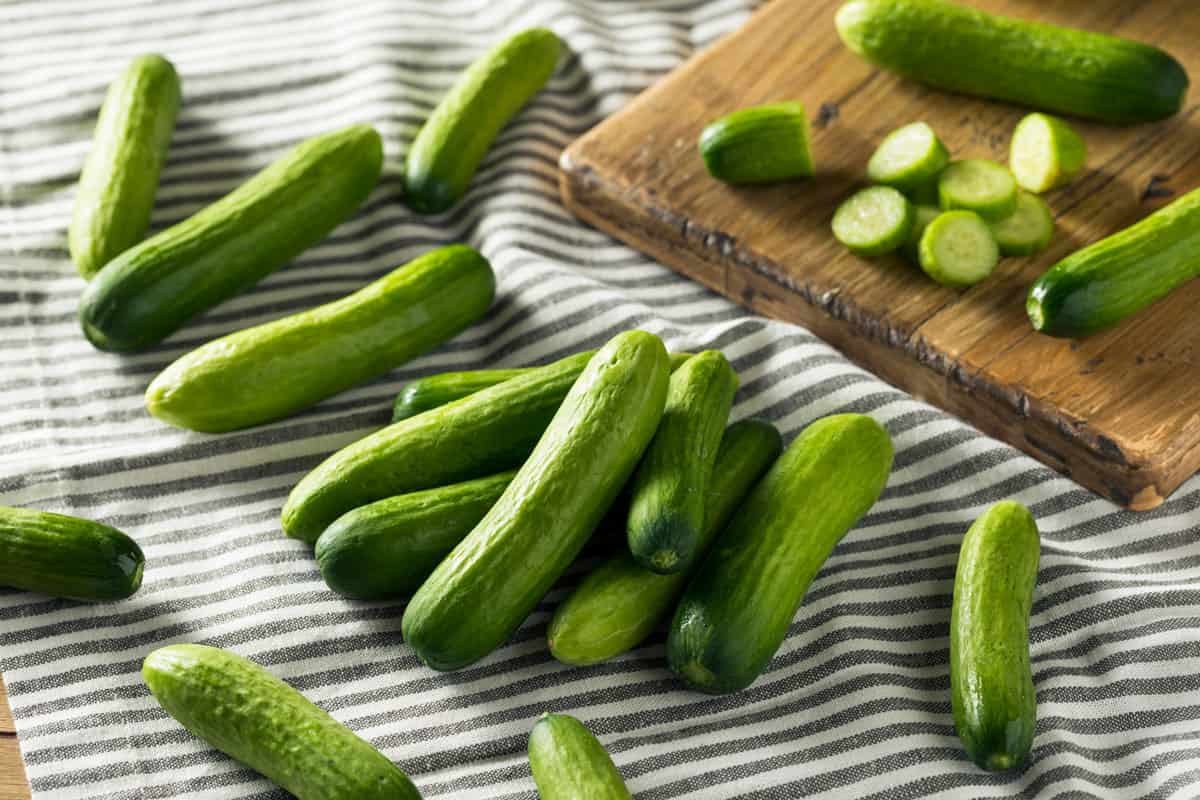
Early detection is the key to preventing pests from devouring your baby cucumbers. By understanding the different symptoms and what type of insect pests are causing them, you can find a solution to prevent or eliminate their spread.
Now that you have a better understanding of what is eating your baby cucumbers and how to prevent them, you may want to take a look at these related articles from Gardentabs.com:
What Is Eating My Rhododendrons?
Can Cucumbers Be Grown In Pots?


